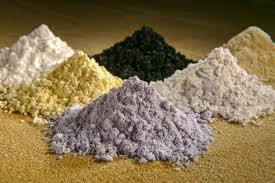U.S. President Donald Trump and Chinese President Xi Jinping have concluded their summit in South Korea with a crucial agreement to keep China’s rare earth exports flowing — a move aimed at stabilizing global supply chains for key technologies.
What Are Rare Earths?
Rare earths are a group of 17 metallic elements — including scandium, yttrium, and 15 lanthanides — essential for modern technology. Despite their name, these elements aren’t actually rare; they’re just difficult and costly to extract because they’re scattered in small concentrations across the Earth’s crust.
Where Are They Used?
Rare earths are vital components in a wide range of products — from smartphones, electric vehicles (EVs), and wind turbines to medical equipment and advanced military systems like radar and fighter jets. Magnets made from rare earths power everything from washing machines to F-35 jets, making them indispensable to global industries.
Who Produces Them?
While the U.S. pioneered early rare earth separation technology in the 1950s, China has since become the world leader. Today, it accounts for around 60% of global mine production and nearly 90% of refined output and magnet manufacturing — thanks to decades of government backing and lower production costs.
Are They Really Rare?
Not exactly. Elements like cerium and lanthanum are as common as lead, but extracting and refining them economically is challenging. This has allowed China to dominate the sector, while alternative projects in the U.S., Europe, and Australia are still years away from large-scale production.
Environmental Impact
Processing rare earths often involves toxic chemicals and can generate radioactive waste, posing serious environmental risks. Efforts are underway to develop cleaner, more sustainable extraction technologies, but widespread adoption remains limited.
Why It Matters
By ensuring continued Chinese exports, the Trump-Xi deal helps secure the supply of materials crucial for electronics, renewable energy, and defense industries — all of which depend heavily on these “hidden metals of the modern world.”

